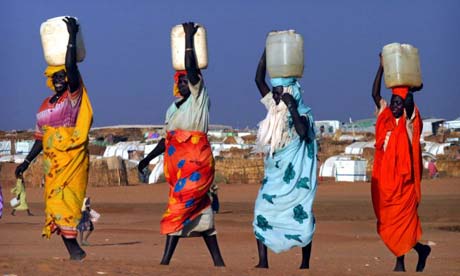- Annual rainfall varies from 25 mm in the Sahara desert, in the north, to over 1,500 mm in the south.
- Sudan is so vast (about 2,000 km from north to south and 1,800 km from east to west) that it lies in multiple climatic zones. In the north, where the Sahara extends into much of the country, the climate is arid, while the south is influenced by a tropical wet-and-dry climate. This variation directly affects rainfall: a rainy season runs from April to October in southern Sudan, but the rainy period gradually diminishes in length towards the north, and rainfall is scarce in the far north.
- In addition to geographic and seasonal variability in rainfall distribution, there are indications of a decreasing trend in the amount of rainfall in the last 30 years, with the dry zone increasingly extending towards the south.
- Almost 80% of the country falls in the basin of the Nile River and its two main tributaries: the White Nile, originating in the equatorial lake region (shared by Burundi, Kenya, Rwanda, Uganda, the United Republic of Tanzania and Zaire), and the Blue Nile, which rises in the Ethiopian highlands. The two join at Khartoum to form the Nile, which flows northwards through Egypt to the Mediterranean Sea. Read more
Archive for January 6, 2012
Facts and figures about Sudan
Category: Facts and figures |


